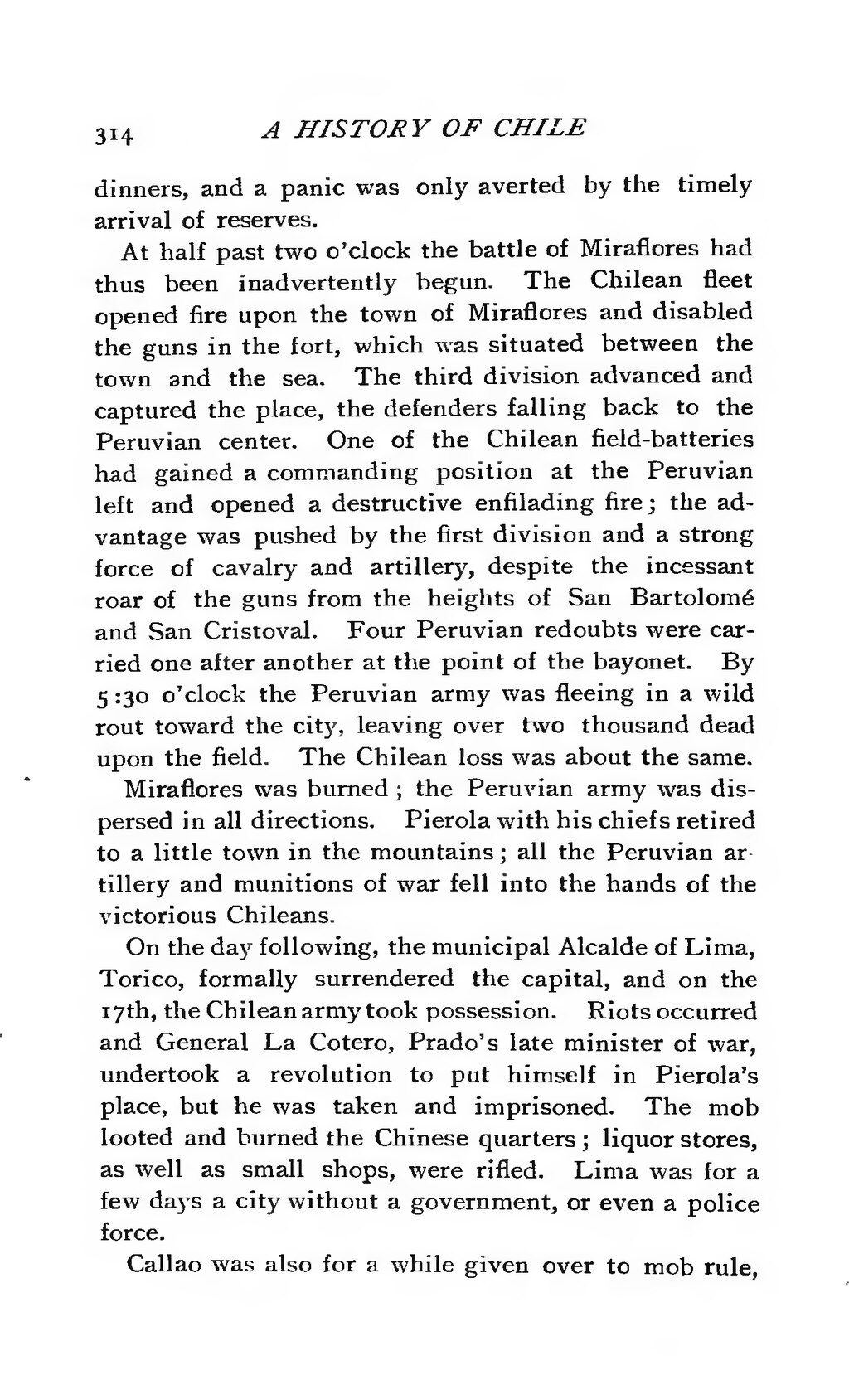dinners, and a panic was only averted by the timely arrival of reserves.
At half past two o'clock the battle of Miraflores had thus been inadvertently begun. The Chilean fleet opened fire upon the town of Miraflores and disabled the guns in the fort, which was situated between the town and the sea. The third division advanced and captured the place, the defenders falling back to the Peruvian center. One of the Chilean field-batteries had gained a commanding position at the Peruvian left and opened a destructive enfilading fire ; the advantage was pushed by the first division and a strong force of cavalry and artillery, despite the incessant roar of the guns from the heights of San Bartolomé and San Cristoval. Four Peruvian redoubts were carried one after another at the point of the bayonet. By 5:30 o'clock the Peruvian army was fleeing in a wild rout toward the city, leaving over two thousand dead upon the field. The Chilean loss was about the same.
Miraflores was burned ; the Peruvian army was dispersed in all directions. Pierola with his chiefs retired to a little town in the mountains ; all the Peruvian artillery and munitions of war fell into the hands of the victorious Chileans.
On the day following, the municipal Alcalde of Lima, Torico, formally surrendered the capital, and on the 17th, the Chilean army took possession. Riots occurred and General La Cotero, Prado's late minister of war, undertook a revolution to put himself in Pierola's place, but he was taken and imprisoned. The mob looted and burned the Chinese quarters ; liquor stores, as well as small shops, were rifled. Lima was for a few days a city without a government, or even a police force.
Callao was also for a while given over to mob rule.
